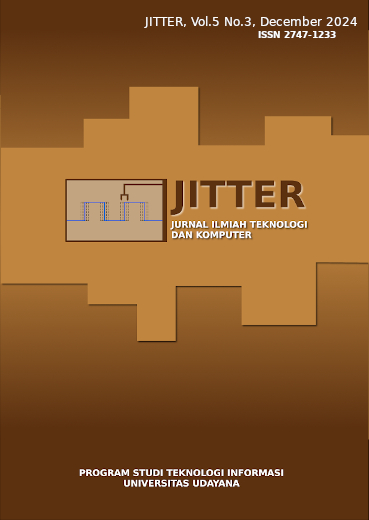Data Mining Classification to Predict Student Graduation Using the Naive Bayes Method
Abstract
Data mining helps provide precise and careful decisions. Student graduation on time is one of the assessment points in the higher education accreditation process. However, student graduation cannot always be detected quickly, which can reduce the assessment of a university in the accreditation process. This problem arises to find out whether students will be able to graduate on time or not. Classification method for predicting student graduates using the Naïve Bayes algorithm. Whether a student graduates on time or not, it is hoped that the results will provide information and input for the university in making future policies. From the results of this test, it was found that by applying the Naïve Bayes algorithm the system can predict student graduation in a timely manner. After comparing several literatures, it can be concluded that this method can be used for this prediction with an accuracy rate of 90%. This literature review is important as a supporting factor for research.
References
[2] L. Setiyani, M. Wahidin, D. Awaludin, and S. Purwani, “Analisis Prediksi Kelulusan Mahasiswa Tepat Waktu Menggunakan Metode Data Mining Naïve Bayes : Systematic Review,” Fakt. Exacta, vol. 13, no. 1, p. 35, 2020, doi: 10.30998/faktorexacta.v13i1.5548.
[3] A. Wasik et al., “Implementasi data mining untuk memprediksi penjualan accessoris handphone dan handphone terlaris menggunakan metode k-nearest neighbor (k-nn) 1,” vol. 1, no. 2, pp. 469–479, 2024.
[4] E. luthfi and U. Amikom, Algoritma Data Mining. Penerbit Andi, 2009. [Online]. Available: https://books.google.co.id/books?id=-Ojclag73O8C
[5] A. S. Huda, R. M. Awangga, and R. N. S. Fathonah, Prediksi Penerimaan Pegawai Baru Dengan Metode Naive Bayes. in Data Science. Kreatif, 2020. [Online]. Available: https://books.google.co.id/books?id=aawGEAAAQBAJ
[6] P. Studi, T. Informatika, A. A. Muin, P. Studi, and S. Informasi, “Metode Naive Bayes Untuk Prediksi Kelulusan ( Studi Kasus : Data Mahasiswa Baru Perguruan Tinggi ),” vol. 2, no. 1, 2016.
[7] T. P. Hamakonda, Pengantar klasifikasi persepuluhan Dewey. Gunung Mulia, 1978. [Online]. Available: https://books.google.co.id/books?id=l4yxjMA8rQcC
[8] W. I. Rahayu, M. H. K. Saputra, R. M. Awangga, and R. Habibi, Penerapan Metode Naive Bayes dan Skala Likert Pada Aplikasi Prediksi Kelulusan Mahasiswa. Kreatif, 2020. [Online]. Available: https://books.google.co.id/books?id=CZv9DwAAQBAJ
[9] S. P. M. S. Ni’matuzahroh and M. P. Susanti Prasetyaningrum, OBSERVASI: TEORI DAN APLIKASI DALAM PSIKOLOGI. in 1. UMMPress, 2018. [Online]. Available: https://books.google.co.id/books?id=CMh9DwAAQBAJ
[10] M. Zed, Metode Penelitian Kepustakaan. Yayasan Pustaka Obor Indonesia, 2008. [Online]. Available: https://books.google.co.id/books?id=zG9sDAAAQBAJ
[11] L. J. Moleong and T. Surjaman, Metodologi penelitian kualitatif. Remadja Karya, 1989. [Online]. Available: https://books.google.co.id/books?id=YXsknQEACAAJ
[12] M. Hasanah, N. H. Harani, N. Riza, R. M. Awangga, and R. Habibi, Implementasi Barcode Dan Algoritma Regresi Linear Untuk Memprediksi Data Persediaan Barang. Kreatif. [Online]. Available: https://books.google.co.id/books?id=db38DwAAQBAJ




